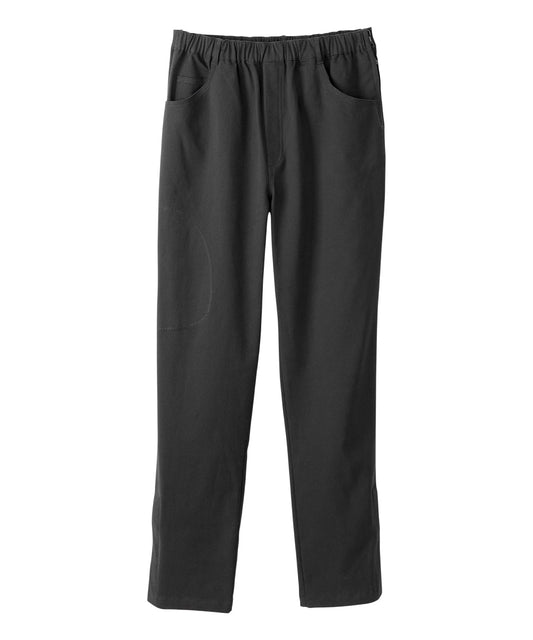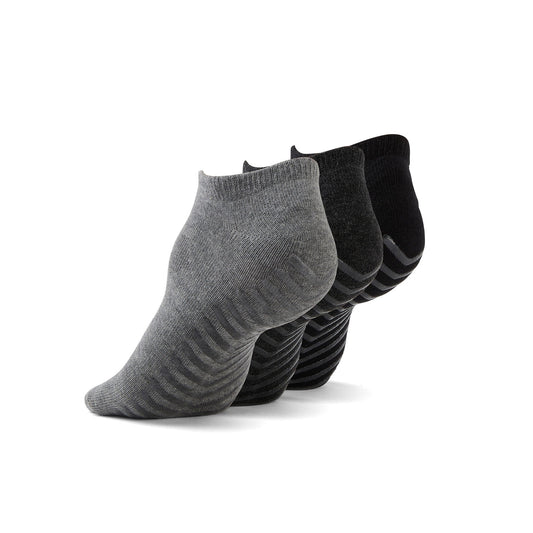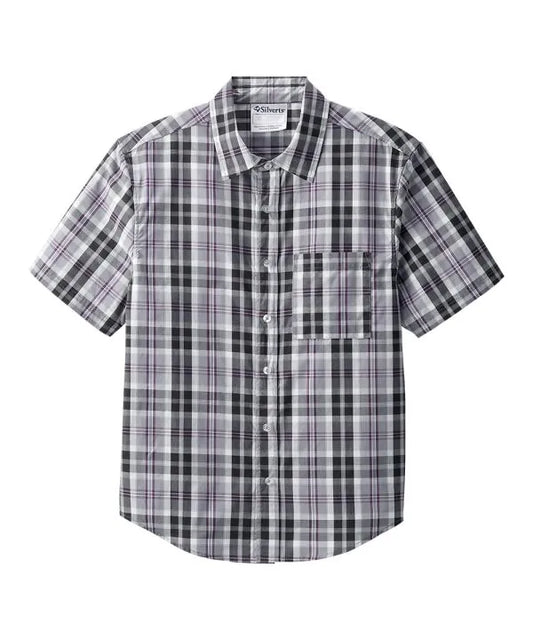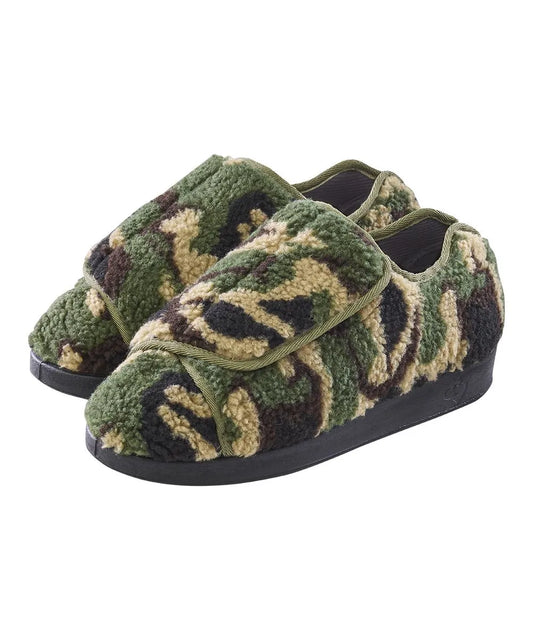Written by: Tanish Lad
The experience of living with chronic pain can turn even the most trivial daily tasks into significant hurdles, and choosing what to wear is no exception to this. People who live with conditions such as arthritis, fibromyalgia, or neuropathy often find that regular clothing lacks the comfort and functionality they need. Ill-fitting, constrictive apparel, which irritates the skin, or requires great effort in dressing itself can enhance this discomfort and hinder daily activity, making a basic part of daily life into one that's quite annoying. Thanks to changes in adaptive fashion, the world has become much better at designing apparel with aesthetics and relief from pain. Through adaptive fashion, by putting comfort first without sacrificing aesthetics, people are empowered to take back control over their wardrobe choices and, by extension, their confidence and well-being. This chapter will explain how people with chronic pain can dress comfortably and stylishly while reducing discomfort and embracing a renewed sense of ease in their daily lives through knowledge of the best materials, innovative clothing features, and styling tips.
What Clothing Materials Are Best for Managing Chronic Pain?
Wearing the right materials can make all the difference in chronic pain management. The wrong fabrics will further irritate sensitive skin, restrict movement, or add to general discomfort. Soft, breathable fabrics include cotton, bamboo, and modal. These fabrics are gentle on the skin, wick away moisture, and allow for adequate ventilation, reducing the chances of irritation. For example, bamboo is especially noted for its natural antibacterial properties and hence, is great for sensitive skin.
Fabrics with stretch, like spandex or Lycra blends, are great for flexibility, especially when one has limited mobility or aching joints. Temperature-regulating fabrics include merino wool and moisture-wicking synthetics that will take care of discomfort from general temperature sensitivity or excessive sweat. Merino wool, in particular, is an excellent choice since it regulates body temperature without itchiness. On the other hand, coarse, stiff, or highly synthetic fabrics like nylon or conventional polyester are best avoided, as they may heighten discomfort and further irritate the sensitive areas.
Besides these recommendations, one may consider those fabrics that provide a combination of softness and durability, such as Tencel or organic cotton blends. Tencel, made from sustainably sourced wood pulp, is not only silky and breathable but also resistant to wrinkles, making it an excellent choice for those who like low-maintenance clothes. Organic cotton, free from harsh chemicals and pesticides, provides an even softer and safer option for those with heightened skin sensitivities. For those who easily inflame or swell, lightweight fabrics with a little stretch, like jersey knits, can provide a comfortable, supportive fit that moves with, rather than constricts, the body. By choosing fabrics that marry comfort, practicality, and versatility, people in chronic pain can create a wardrobe that feels as good as it looks.
Looking for a pair of sweatpants? At June Adaptive, the Women’s Fleece Sweatpants with Easy Touch Closures is a great buy that offers an adjustable hem, polyester-cotton fleece, and a snap closure at the waistband!

How Does Adaptive Clothing Improve Comfort for People with Chronic Pain?
Adaptive clothes are a specific design to make the lives of people suffering from chronic pain easier by catering to particular problems they may face in daily life. One of the major benefits that comes with adaptive clothing is no pressure points. Many designs avoid tags, tight bands, and seams that dig into the skin and cause irritation. Instead, either the seams are flatlock or the clothes are fully tag-free to make wearing comfortable. Besides, lightweight and breathable fabrics contribute to reducing friction and overheating; this again adds to overall comfort. The use of easy-to-manage closures is another distinguishing mark of adaptive clothing. This frustration in stress and discomfort with traditional buttons and zippers can be a major frustration for someone with restricted hand dexterity or even joint pain. Adaptive clothes often use magnetic closures, Velcro, or other hook-and-loop fasteners, which are easy to fasten and unfasten. Elastic waistbands and slip-on styles further reduce the amount of effort required to dress and undress, allowing easier independence and a reduction in the physical burden of dressing. Wrap-around designs or clothes with side openings are very practical for people who have extreme sensitivity or limited mobility.
Besides, some adaptive clothing items include compression features that will give gentle support to improve circulation and alleviate muscle or joint pain. In cases of compression, leggings can act to reduce swelling and provide stability for those whose limbs and cores ache in continuous ways. Adaptive design also accommodates those with particular medical equipment, such as braces, catheters, or insulin pumps, by allowing unobtrusive openings within design features to provide extra room where these devices sit on the skin. Because of wearing such garments, one does not feel any discomfort in having to wear their medical attachments accordingly. Many have thoughtful design features that offer something specifically to help pain, which adaptive clothing usually contains: a hemline that adjusts easily, temperature-regulating panels, or a moisture-wicking lining. Such touches often result in not only highly practical items of clothing but also overall gains for wearers in the quality of life by minimizing stress in routines.
Do you know someone with chronic foot pain? The Men's Extra Wide Comfort Slippers at June Adaptive are a must-have. This product features cushy memory foam, and warm plush lining, and is slip-resistant.

What Tips Can Help with Dressing Stylishly While Minimizing Discomfort?
Living with chronic pain does not necessarily mean one has to give up considerations of fashion. It is still possible to embrace certain styles while being comfortable and remaining aesthetically pleasing, so long as some basic principles are followed. One of the biggest tips I came across was having a selection of basics that could be mixed and matched in different ways. Informal dresses that allow for elastic, well-fitted trousers or even tunics made from pliable fabrics give versatility, enabling both formal and informal looks. A further good approach is layering. The use of children's cardigans or shawls, along with more fashionably designed cropped jackets made from comfortable materials, allows for an easy way of adjustment as a reaction to changes in temperature. There are many such adaptive accessories available today: belts with magnetic closures and shoes with slip-on styles that have Velcro built into the soles of the shoes. All of those items are functional and add style but require very little effort to use. Those simple adaptations mean much in functionality and style.
Lastly, it is important to include the use of magnet closure patches that will be integrated into garments to make them more wearable without compromising on the stylish outlook. While choosing the outfits, it is necessary to keep the fabric tailored to fit properly yet designed in a way that allows free movement. But it is important that neutral-colored cloth and simple geometric figures just can freshen an individual's appearance making it more modern while applying bright colors can transform such a monotonous or even lackluster character into something vivid and sparkling.
Where Can You Find Adaptive Clothing Tailored for Chronic Pain Sufferers?
Adaptive fashion has seen growing demand, therefore making available a line of clothes meant for people with chronic pain. This initiative is being taken up by both mainstream brands and specialized ones through the development of functional inclusive designs.
High-fashion brands, such as Nike FlyEase, have released fashion-forward clothes with magnetic closures and adjustable hemlines. IZ Adaptive also caters to comfort and accessibility, offering a wide selection of products that emphasize sleekness and style. These lines do a great job of blending the visual appeal of mainstream fashion with the functionality of adaptive design.
Specialized adaptive brands, like Silvert's Adaptive Clothing, focus exclusively on fashion for people with a disability or chronic illness. These include shirts with Velcro closures, trousers with elastic waists, and dresses with easy-open fastenings. Another popular brand is Care+Wear, which designs clothes for people who have to integrate medical devices into their attire while still making sure it looks modern. In addition, custom-made options are increasingly available from online platforms such as Etsy. Many small businesses offer custom adaptive clothing that can be designed specifically to meet individual needs, such as sensitive areas or unusual body shapes. For cheaper options, second-hand shops and online marketplaces like Poshmark often have gently used adaptive clothing for sale at a lower price. Lastly, local boutiques and seamstresses are great resources for creating or altering adaptive clothing. Going around with a tailor, at some point, does have the effect of developing good relationships as well, one-of-a-kind pieces combined with style in function.
For more clothing items for arthritis patients, take a look at an article by June Adaptive Blog: 7 Best Clothing Items for Arthritis Patient
Conclusion
Chronic pain turns simple, everyday activities into more laborious ones, such as the simple process of getting dressed. However, adaptive fashion is a solution that places comfort at the forefront without making one compromise on style. By opting for the right materials, investing in thoughtfully featured clothing, and using practical styling tips, people with chronic pain can dress without discomfort and showcase their style. Whether it be through more mainstream adaptive lines, specialized brands, or customized garments, the options within adaptive clothing continue to expand in a nod to the industry's inclusive times. Adaptive fashion is far more than just a trend; it is one surefire way to make sure that everyone, regardless of physical challenges, can look great and feel great. And as innovation in this space continues, so too will more thoughtful and stylish solutions for those living with chronic pain.
Next Steps
Ready to experience the difference adaptive fashion can make?
Explore JuneAdaptive.com's diverse collection of adaptive clothing designed for comfort, style, and independence.
Sign up for our newsletter: Receive a free guide on Disability Grants and resources around the US and Canada to empower you or your loved one's journey.
Join our community!















